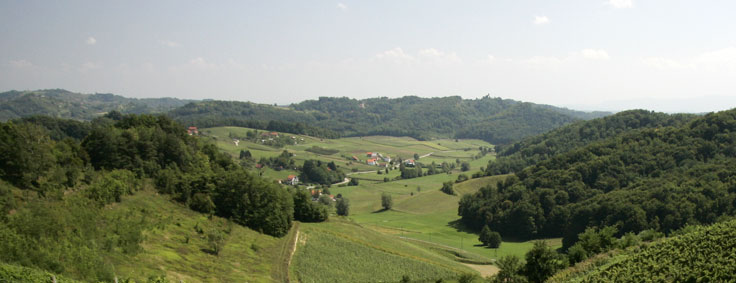



The geographical location has given Samobor its rich history. We found traces of prehistoric humans, some artifacts from the Roman period and the settlement of the Slavs, as well as more recent events.
The best review of historical events is evident in the geological and archeological, cultural and historical, as well as other specialized collections of the Samobor Museum. The inhabitants of this area and the town's spatial dispersion reflect historic events, landscape features and traffic routes.
Traces of pre-Christian civilization were found on the Žumberak mountain. The current population originally came from the East, from areas under Turkish occupation. The proof for this may be found in the names of settlements, family names and the Greco-Catholic faith.
There are many historical influences visible in the valleys of the Samobor county. Due to intensive settlement and mixed population there are almost no indigenous inhabitants in this area which is one of the most densely populated parts of Croatia. The greenery above the town hides the ruins of the once strong Old Town of Samobor. It is an ancient settlement, with remains from the stone and metal age. The document issued by king Bela IV, proclaiming the medieval Samobor as a respectable and "free royal town" is still kept in the town's records. Ever since that time the cultural and historical heritage on this town and area has been growing steadily. Since 1260, when the construction of the Old Town began - history began recording many conflicts and battles for freedom with native and foreign invaders; all of this well documented by numerous objects and documents. A more intensive development of mining in the copper and iron mines in Rude began in the 16th century. The school is mentioned for the first time in 1535. "The school was attended not only by local children, but also foreign - from noble families", said Milan Lang in his testimonial about this public primary school. In 1807 Samoborska glazba (Samobor Music) was founded and has been active until today. Perhaps there is no other small town like Samobor with so many great dates in its cultural and national heritage. Libertine ideas, brought by Napoleon's soldiers, were only a step further in developing the idea of freedom, which blossomed with Ferdo Livadić, when his house and Samobor became the meeting point of cultural and political life. Even Ljudevit Gaj used to visit Ferdo Livadić. Samobor resonated with Croatian songs and the national movement. Samobor felt the spirit of the coming freedom. In the winter of 1833, Ljudevit Gaj arrived to Livadić's house, wrote the most famous Croatian patriotic poem "Još Hrvatska ni propala" ("Croatia will never Perish"), and Livadić wrote the music during that same evening. Except Gaj, others also came to Samobor: Vukotinović, Rakovac, Štoos, Vraz, Bogović, Draškovć, Jelačić, Trnski, Preradović, Mažuranić. Stanko Vraz, or as they called him "The Illyrian from Styria", came to Samobor in 1836 and found his muse, Ljubica, to whom he wrote his famous poem cycle "Đulabije". Vraz considered Samobor his home town and when the famous Croatian writer, A. G. Matoš was in Samobor, he wrote: "Vraz's town is Samobor, because we own the places we love most".